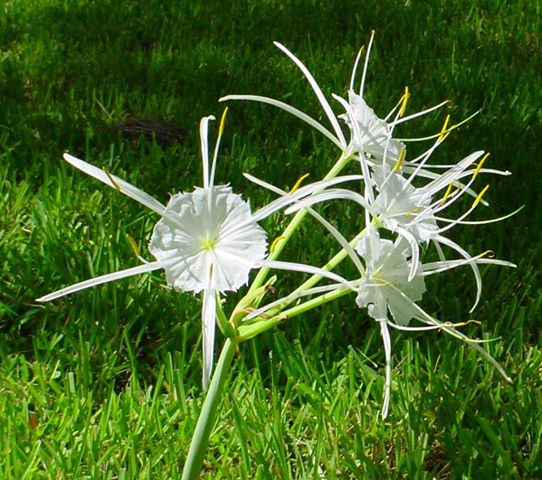Classification System: APG IV
Superregnum: Eukaryota
Regnum: Plantae
Cladus: Angiosperms
Cladus: Monocots
Ordo: Asparagales
Familia: Amaryllidaceae
Subfamilia: Amaryllidoideae
Tribus: Hymenocallideae
Genus: Hymenocallis
Species: Hymenocallis pimana
Name
Hymenocallis pimana Laferr., Phytologia 68: 256 (1990)
Distribution
Native distribution areas:
Continental: Northern America
Regional: Mexico
Mexico Northeast (Chihuahua).
References: Brummitt, R.K. 2001. TDWG – World Geographical Scheme for Recording Plant Distributions, 2nd Edition
References
Laferrière, J.E. (1990) Phytologia 68: 256.
Links
Govaerts, R. et al. 2018. Hymenocallis pimana in World Checklist of Selected Plant Families. The Board of Trustees of the Royal Botanic Gardens, Kew. Published online. Accessed: 2018 Aug. 02. Reference page.
International Plant Names Index. 2018. Hymenocallis pimana. Published online. Accessed: Aug. 02 2018.
The Plant List 2013. Hymenocallis pimana in The Plant List Version 1.1. Published online. Accessed: 2018 Aug. 02.
Tropicos.org 2018. Hymenocallis pimana. Missouri Botanical Garden. Published online. Accessed: 02 Aug. 2018.
Emonocot.org 2015. Hymenocallis pimana in The Orders and Families of Monocotyledons. Published online. Accessed: 2015 May 20.
Vernacular names
English: Pima spider-lily
español: Cebollín
Hymenocallis pimana[1] is a member of the genus Hymenocallis, in the family Amaryllidaceae. Common name in English is Pima spider-lily; in Spanish it is cebollín. It is endemic to a small mountainous region in the Sierra Madre Occidental, straddling the Mexican states of Chihuahua and Sonora. Many of the people of the region are of the indigenous group known as the Mountain Pima or Pima Bajo.[2]
Type locale is the small village of Nabogame, approximately 18 km northwest of Yepáchic, Chihuahua and about 10 km east of the frontier with Sonora.[1] This is at elevation of approximately 1800 m (6000 ft).[3][4]
Ecology
The plant is locally abundant in the vicinity of the type locale. It grows in large colonies of hundreds of individuals, often near waterways and gulleys. This largely due to the nature of the large, green seeds which fall on the ground and germinate close to the parent plant without much dispersal.[1]
The large, showy flowers appear in June, at the beginning of the summer rainy season. Flowers are white and erect, with narrow perianth segments and a prominent corolla. Bulbs resemble small onion bulbs.[1]
Uses
The Pima peoples of the region report that these bulbs provided an emergency food source in years past, during famines that followed crop failures. They say that the bulbs were boiled in lye to remove toxic alkaloids before consumption. This is the only known instance of any people utilizing any member of this genus as food.[5]
References
Laferrière, Joseph E. 1990. Hymenocallis pimana (Amaryllidaceae): a new species from northwestern Mexico. Phytologia 68(4):255-259.
Laferrière, Joseph E., Charles W. Weber and Edwin A. Kohlhepp. 1991a. Use and nutritional composition of some traditional Mountain Pima plant foods. Journal of Ethnobiology 11(1):93-114.
Laferrière, Joseph E. 1994b. Vegetation and flora of the Mountain Pima village of Nabogame, Chihuahua, Mexico. Phytologia 77:102-140.
Tropicos, photo of isotype at Missouri Botanical Garden
Laferrière, Joseph E. 1998. Native detoxification of bulbs of Mountain Pima spider-lily (Hymenocallis pimana, Amaryllidaceae). Economic Botany 52(2):207-208.
Retrieved from "http://en.wikipedia.org/"
All text is available under the terms of the GNU Free Documentation License


